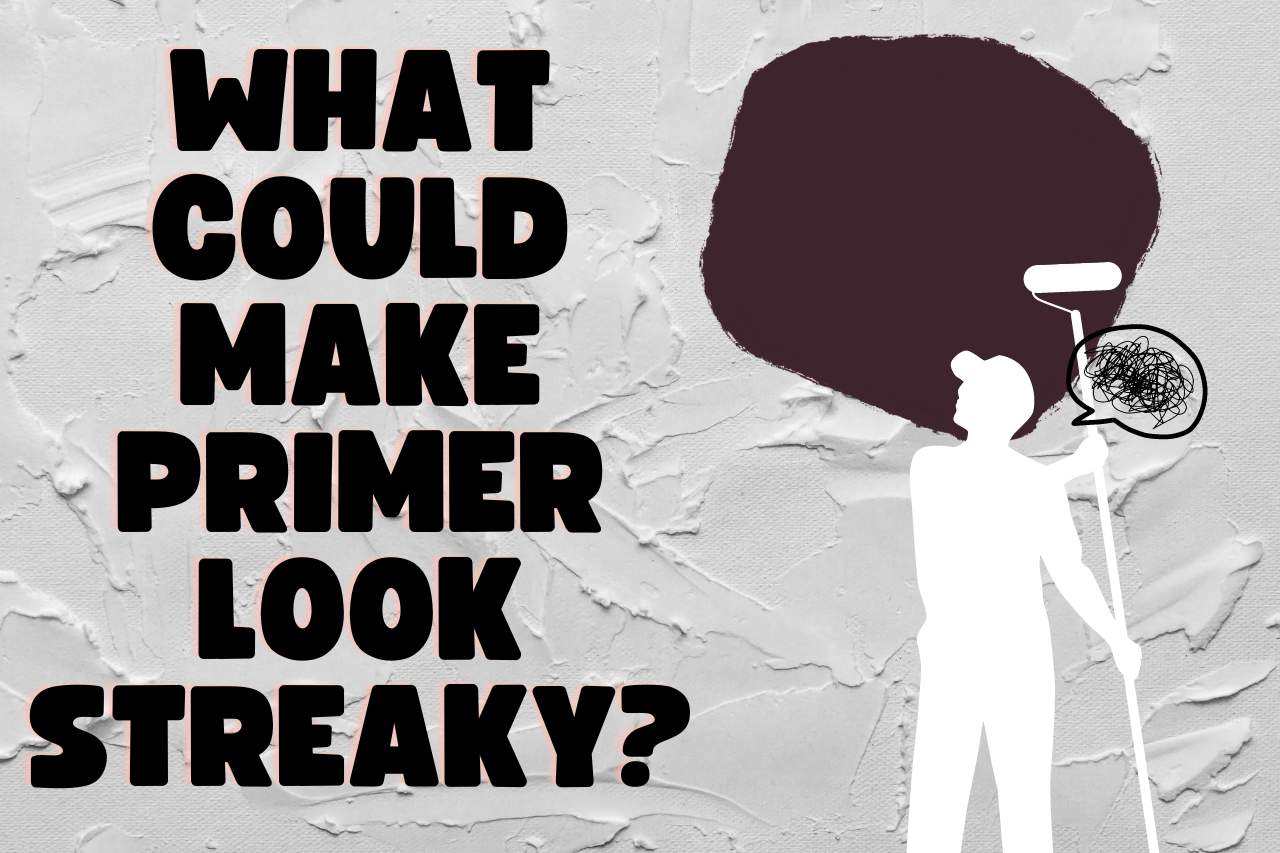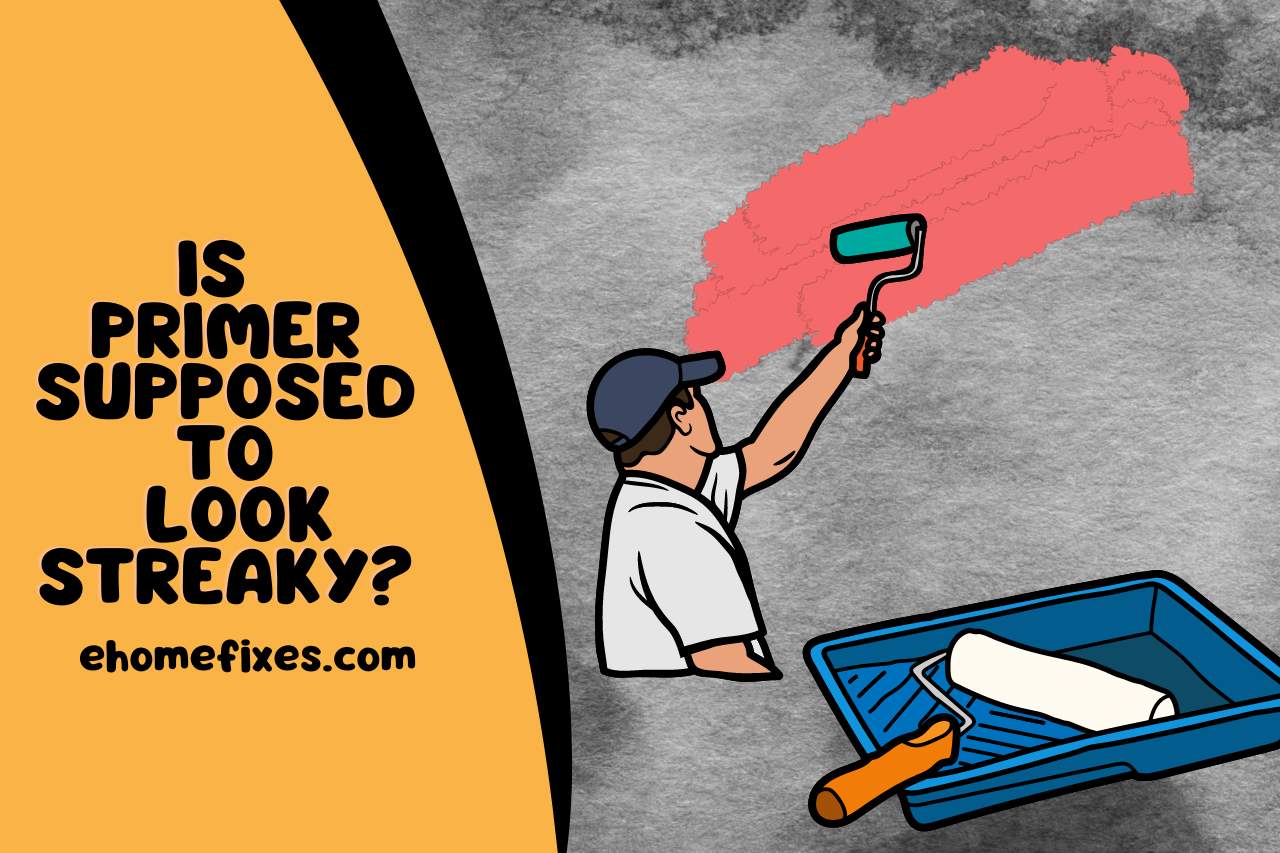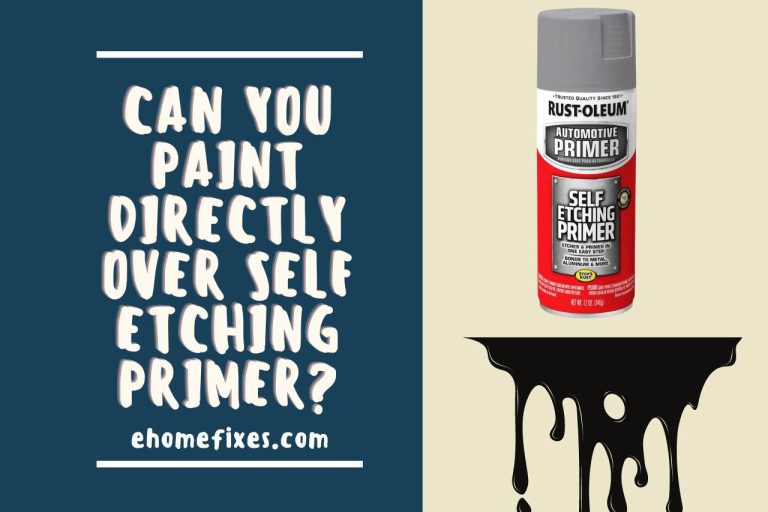Is Primer Supposed to Look Streaky? (Everything Explained)
No, it is not. But sometimes it may. Using a primer is a key step that can have an impact on your outcome as it relates to coloring your walls. The overall appearance and longevity of your finished project can be enhanced by using a primer as a base coat for your paint to settle to. Is primer supposed to look streaky?
Primer can occasionally appear streaky and uneven after application, which can be problematic. Even the primer is not the final result; some individuals concern when the primer on the wall begins to appear streaky. This doesn’t always have an obvious solution. The kind of primer you choose, the application technique, and the surface you’re painting can all affect how your primer turns out.
What Could Make Primer Look Streaky?
Condition and Brand of the Primer
The primer that you use can be a cheap or old product. The primer may appear streaky if the porosity or consistency does not suit the surface to be painted.
Incorrect Painting Technique
Occasionally when someone tries to apply the primer themselves, they may not be familiar with the rollers to apply the primer uniformly. As a result, some areas may have bumps, and some may not receive enough primer. It might cause the paint to be thicker in some spots and generate clumps.
Choosing the Formula and Color
There’s a chance the background’s color won’t match, and the primer’s formulation can be too thick or too thin. One coat of the primer could just not be enough to provide adequate coverage.
Moreover, the taping might not be suitable for applying primer. Together, these factors give primers a streaky appearance.

Is Primer Supposed to Look Streaky?
No, the Primer is Not Supposed to Look Steaky
The primer should be evenly applied to prevent forming of lines. Even though the primer isn’t required for painting, it must be applied properly. One could use more than one coat if the prior paint was a darker colour. This will be useful since the paint will be stickier after the primer is applied, and the prior paint colour will be simpler to cover. Make sure to replace the primer or apply additional coats of primer if it has cracks and lines. If the primer is applied properly, your top coats will look more finished, which will improve the outcome of your project as a whole.
You must check for the following if the primer looks streaky.
- The primer should look even and consistent.
- Your priming coat shouldn’t have any blotches, dribbles, or uneven color.
- It’s acceptable for the prior paint color to reveal slightly through the primer.
Before painting, the primer should be evenly covered, leaving no spaces unpainted. There shouldn’t be any spots or lines visible. It’s not expected for the primer to be entirely transparent. It’s okay if a slight of the earlier colors appears. All primer needs to do is adhere to the paint for the older paint to be automatically covered up. The primer must be applied with a smooth finish. The consistency of the primer shouldn’t be excessively thin or thick. If the thickness is too high, a solvent should be added.
Tips to Prevent Streaky Primer
You must look out for any spots where patches are visible through the primer as you apply it. Put on an additional layer of primer if you come across anything similar. We highly recommend to work in a small section at a time after placing your roller against the wall. Doing this allows the paint to be equally distributed and flow easily up and down the walls.
If you apply thick paint in clumps all over your home, sand the area well with something like sandpaper before repainting.
Before painting on your topcoat, it is important to allow the primer to dry once you’ve finished applying it completely. If not, as your topcoat dries, some areas will have streaks showing through.
Make sure you master the correct brush and roller skills before you begin painting.
Make sure your rooms are well-ventilated before applying the primer to prevent the problem of paint emitting hazardous fumes. This will make sure that your primer isn’t streaky. To ensure that air can reach all corners, it’s also a good idea to apply a layer of primer in a somewhat larger area than you need to.
How Many Coats of Primer are Needed?
Mostly, it’s two. But, one coat will be enough for fresh, stainless surfaces.
For adequate coverage on old surfaces with dark paint or spots, two or more coats are required. Always apply a new coat if the first coat doesn’t look as expected or has noticeable lines. Make sure your top coat has adequate adhesive power to hold the paint to itself.
If you use the primer in a particularly humid environment, you should also use a second coat because the air humidity will make it easy to smudge off. It’s crucial to apply two coats if you’re renovating an older home in order to make your walls smooth and more durable for the new color.
Which One is Better to Use for Applying the Primer: Brush or Roller?
Depend on the paint you applied. However, if you’re using a smooth finish, brush strokes will disappear after rubbing it with a roller. Roller lines will not dry uniformly on some matte paints. Keep in mind that using a brush excessively can cause your primer to look streaky.
Using both tools at the same time is the best method to prevent this. Use a small brush to cover the areas that require brush strokes before covering them with your roller. By doing this, you may apply paint to the entire piece without worrying about it drying out first.
Conclusion
Now you know the answer to the question that pops inside your head when you see visible lines after applying the primer.
“Is primer supposed to look streaky?” No, it is not.
Even though it is not the final coat, you should apply it evenly for a better outcome. So, take your time and apply the primer correctly without getting it streaky for a neat and perfect appearance.
Watch this one,
Video Credits – The Funny Carpenter
Continue Exploring: More Articles to Keep You Engaged







